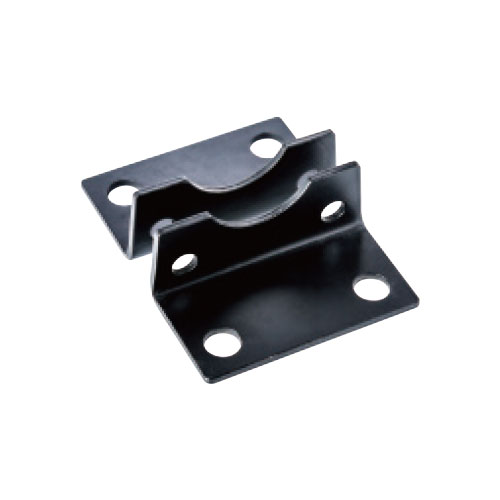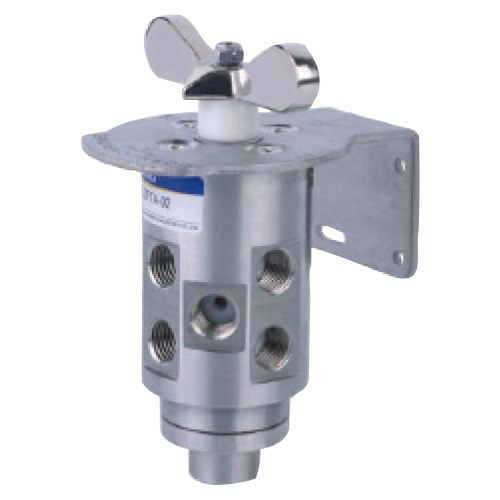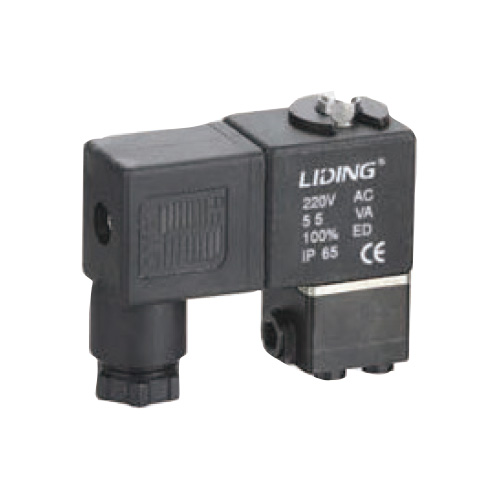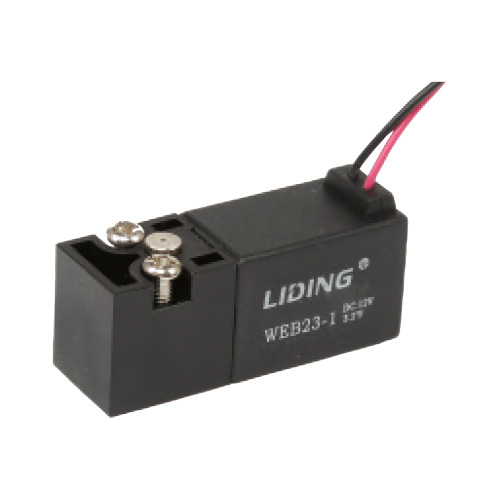The working principle of solenoid valve
Solenoid valve is an automation basic component used to […]
Solenoid valve is an automation basic component used to control fluid, which belongs to actuator; it is not limited to hydraulic and pneumatic. Solenoid valves are used to control the direction of hydraulic flow. Factory machinery is generally controlled by hydraulic steel, so solenoid valves are used.
The working principle of solenoid valve
There is a closed cavity in the solenoid valve with through holes at different positions. Each hole leads to a different oil pipe. In the middle of the cavity is the valve. On both sides are two electromagnets. Where it is attracted, by controlling the movement of the valve body to block or leak out the different drain holes, and the oil inlet hole is normally open, the hydraulic oil will enter the different drain pipes, and then push the oil through the oil pressure The rigid piston, the piston drives the piston rod, and the piston rod drives the mechanical device to move. In this way, the mechanical movement is controlled by controlling the current of the electromagnet.
One: Direct-acting solenoid valve
There are two types: normally closed and normally open. The normally closed type is closed when the power is cut off. When the coil is energized, electromagnetic force is generated, so that the moving iron core overcomes the spring force and attracts the static iron core to directly open the valve, and the medium is in a path; when the coil is powered off, the electromagnetic force disappears and the moving iron The core is reset under the action of the spring force, and the valve port is directly closed, and the medium is blocked. The structure is simple, the action is reliable, and it works normally under zero pressure difference and micro-vacuum. Normally open type is just the opposite. Such as a solenoid valve with a flow diameter smaller than φ6.
principle:
When the normally-closed direct-acting solenoid valve is energized, the solenoid generates electromagnetic attraction to lift the valve core, so that the closing member is separated from the remote valve seat and the sealing pair opens; when the power is off, the electromagnetic force disappears, and the closing element is pressed against the valve by the spring force The valve on the seat is closed. (Normal open type is the opposite of this)
Features: It can work normally under vacuum, negative pressure and zero pressure, but the general diameter does not exceed 25mm.
2. Step-by-step direct-acting solenoid valve
The valve is connected with a primary opening valve and a secondary opening valve. The main valve and the pilot valve step by step so that the electromagnetic force and the pressure difference directly open the main valve port. When the coil is energized, electromagnetic force is generated to make the moving iron core and the static iron core attract, the pilot valve port is opened and the pilot valve port is set on the main valve port, and the moving iron core and the main valve core are connected together, at this time the main valve is on The pressure of the cavity is unloaded through the pilot valve port, and the main valve core moves upward under the simultaneous action of the pressure difference and the electromagnetic force, and the medium flow of the main valve is opened. When the coil is de-energized, the electromagnetic force disappears. At this time, the movable iron core closes the pilot valve hole under the action of its own weight and spring force. At this time, the medium enters the upper cavity of the main valve core in the balance hole, which increases the pressure in the upper cavity. The main valve is closed under the action of spring return and pressure, and the medium is cut off. The structure is reasonable, the action is reliable, and the work is reliable even when the pressure difference is zero.
Principle: It is a combination of direct-acting and pilot-operated principle. When the pressure difference between the inlet and outlet is ≤0.05Mpa, when power is applied, the electromagnetic force directly lifts the pilot small valve and the main valve closing part upwards in turn, and the valve opens. When the pressure difference between the inlet and the outlet is 0.05Mpa, when the power is turned on, the electromagnetic force first opens the small pilot valve, the pressure in the lower cavity of the main valve rises, and the pressure in the upper cavity drops, so that the pressure difference pushes the main valve upward; when the power is off, the pilot valve and The main valve uses spring force or medium pressure to push the closing piece and move downward to close the valve.
Features: It can work reliably even under zero pressure difference or under vacuum and high pressure, but the power is large and vertical installation is required.
Three, indirect pilot solenoid valve
This series of solenoid valves is composed of a pilot valve and a main valve core connected to form a channel combination; the normally closed type is closed when it is not energized. When the coil is energized, the generated magnetic force causes the moving iron core and the static iron core to attract, the pilot valve port opens, and the medium flows to the outlet. At this time, the pressure in the upper cavity of the main valve core decreases and is lower than the pressure on the inlet side, forming a pressure difference to overcome the spring The resistance then moves upwards to achieve the purpose of opening the main valve port and the medium flows. When the coil is de-energized, the magnetic force disappears, and the movable iron core resets and closes the pilot port under the action of the spring force. At this time, the medium flows in from the balance hole, the pressure in the upper cavity of the main valve core increases, and moves downward under the action of the spring force. Close the main valve port. The principle of normally open is just the opposite.
Principle: When energized, the pilot valve is driven by electromagnetic force to open the pilot valve, the pressure in the upper cavity of the main valve drops rapidly, and a pressure difference is formed in the upper and lower cavities of the main valve. Depending on the medium pressure, the main valve closing part is pushed up and the valve opens; when the power is off, The spring force closes the pilot valve, and the inlet medium pressure quickly enters the upper cavity of the main valve through the pilot hole to form a pressure difference in the upper cavity, thereby closing the main valve.
Features: Small size, low power, but the medium pressure difference range is limited, and the pressure difference condition must be met.








